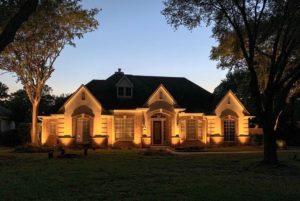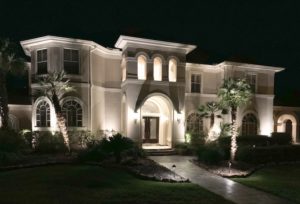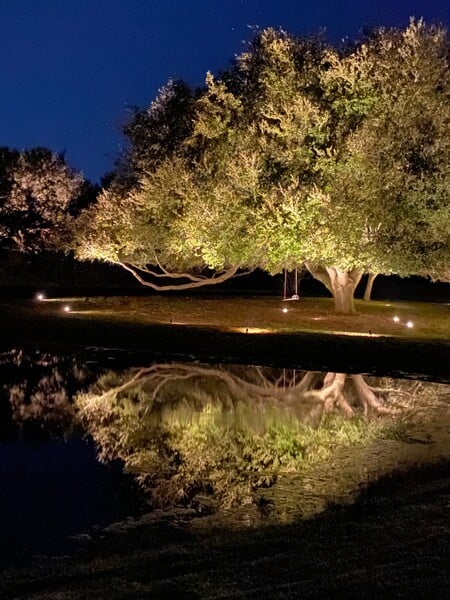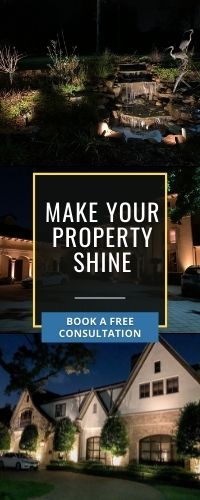Whether you’ve worked with a professional outdoor lighting designer, or you’ve worked on your design on your own, you know how much energy goes into making a plan. If you’ve ever looked at designs for your outdoor lighting display, you’ve come across color temperature without even realizing it. Color temperature is a crucial tool lighting designers use to get the most out of a property and their design. It can even affect the mood of a space. So, what is color temperature? It may seem daunting at first to try and understand, but Houston Lightscapes breaks it down for you.
Defining Color Temperature
While it’s easy enough to say that color temperature(CT) explains various shades of light, it doesn’t take into account the history of it and the complexity of this design tool. While LED lights do not follow the traditional creation of CT, they can output a modern solution to the lighting needs of LED systems. You’ve probably heard of cool colors and warm colors. Well, this coding of colors applies to CT. Color temperature measures how warm or cool a light source is in Kelvins. How was this system developed? Color temperature is based on the color of light produced by heating metal up (thus the term “temperature”). This color ranges from red (warm light) to blue (cool light) and the measurements from 2,200K(warm) – 5,500K(cool). The measure of LED color temperature is based on this traditional measurement scale.
Color Temperature In Design
Color temperature is used in design to create ambiance and reflect a mood. Because the lighting scale is so vast, it allows for endless creativity. The various options mean that different moods can be created with one lighting display. No matter what mood is desired, a designer or homeowner’s vision can come to life thanks to the versatility of CT.
 While outdoor mood lighting can be created with any temperature, warm light is typically preferred by landscape lighting designers. Warm light is not only comforting, but it also highlights the best architectural and natural features commonly found outdoors (think rock and wood, trees and plants). Warm light is flattering and very popular for residential properties, with 2,700K being the standard temperature for residential lighting.
While outdoor mood lighting can be created with any temperature, warm light is typically preferred by landscape lighting designers. Warm light is not only comforting, but it also highlights the best architectural and natural features commonly found outdoors (think rock and wood, trees and plants). Warm light is flattering and very popular for residential properties, with 2,700K being the standard temperature for residential lighting.
Commercial properties often opt for cool lighting or a mix of warm and cool lighting. This is considered a cleaner and more industrial lighting style which is why it is so popular in industrial outdoor properties such as parking lots and parking garages. However, this can also be used in residential areas for outdoor mood lighting. Moonlight registers as cool light on the Kelvin scale, and many find this light appealing and ethereal. Certain properties will utilize this cool light to create ambiance and mysticism in their property.
Choosing Your Outdoor Lighting

If you’re in the market for an outdoor lighting design and don’t know where to start, first consider which mood you are trying to convey. If you want a bright, crisp or clean result, consider lighting that falls on the cool side of the spectrum. Remember, this is 3,500 – 5,500K on the Kelvin scale.
For a softer, more soothing mood, consider warm lighting. You can also achieve a dramatic effect using either cool or warm lighting. For more information on color temperature and ambiance lighting, get in touch with our team of professional lighting designers. We can guide you in the right direction and help you achieve exactly what you’re hoping to achieve. Set up a free consultation and lighting demo where you can see the temperature first hand.


